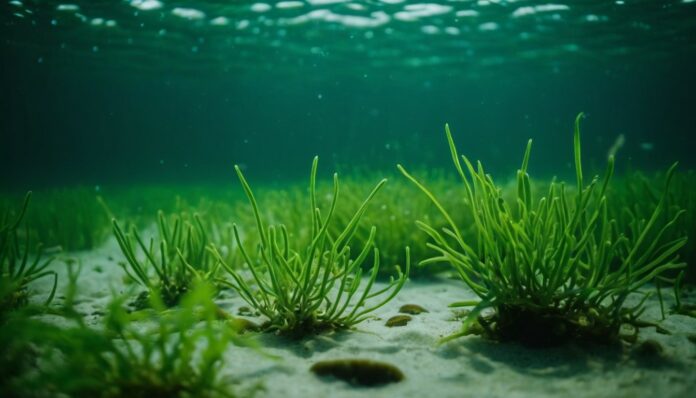Algae are lower plants with a uniform body, found in salty and fresh water bodies, as well as other damp environments.
Science knows over 100,000 species of unicellular and multicellular algae, and their ecological significance is hard to overstate. The ancestors of all land plants appeared in the ocean 3 billion years ago, gradually evolving and colonizing land. They learned to survive and adapt to challenging conditions. Algae are unique inhabitants of our planet with many intriguing aspects.
1. Distribution
Algae are found on all continents, including Antarctica. To survive low temperatures, they freeze into the ice and enter a dormant state. In summer, a peculiar phenomenon occurs: the spores of Chlamydomonas nivalis germinate, turning the snow pink.
Algae live not only underwater but also on rocks, trees, fences—wherever there is enough moisture.
2. Characteristics
Algae absorb nutrients over their entire surface. Some species attach to the bottom of water bodies with a specialized organ called a “holdfast.”
Blue-green algae were once classified as plants, but scientists have recently concluded that these are special bacteria capable of photosynthesis.
3. Chlorella—Food for Astronauts
Chlorella vulgaris first went to space in 1960. It is rich in fats, vitamins, and mineral salts. One teaspoon of this plant contains as much protein as 1 kg of beef.
Chlorella reproduces rapidly, absorbing carbon dioxide and releasing oxygen. Scientists have suggested that astronauts could consume algae, which would also maintain stable air composition. Currently, an experiment is being conducted on the ISS with a bioreactor that creates a closed life-support system on board.
4. Flamingo Feathers Turn Pink Due to Algae
Birds have taken to small salty lakes where there are no fish, but tiny crustaceans feeding on algae rich in carotenoids live. These substances accumulate in the crustaceans’ bodies, then enter the flamingos’ digestive tract and are deposited in their feathers, giving them their unusual color.
5. Algae Enter Symbiosis with Animals and Other Plants
Oophila amblystomatis invade the eggs of spotted salamanders and consume nitrogen—waste from the embryo—while providing oxygen in return. This “cohabitation” tendency is transmitted through the amphibians’ DNA.
Lichens are a unified organism consisting of a unicellular alga and a fungus.
6. Algae Produce 50% of the Oxygen and 80% of the Organic Matter on Earth
Trees and plants on land produce only half of the oxygen essential for life. The rest comes from phytoplankton distributed throughout the World Ocean. Algae also produce a record amount of organic matter, serving as a food source for many aquatic animals.
7. Noctiluca—The Cause of the Mysterious Glow in the Black Sea
Noctiluca (night-shining) is a predatory plant with the ability to fluoresce. It blooms in summer, creating the “mystical” glow on the sea surface.
8. Spirulina—A Mutation-Resistant Alga
The cyanobacterium Arthrospira is unaffected by radiation or chemicals, making it an environmentally friendly product.
9. Caño Cristales—The River of Five Colors
The beautiful river in Colombia is named for the algae that produce colors in black, yellow, red, green, and blue. The intensity of these colors varies with the seasons.
10. Brown Algae Affect Cloud Formation
Researchers at the University of Manchester claim that these plants contribute to cloud formation. During hot weather, algae washed ashore by the tide release iodide. This substance rises into the air, and as it accumulates, it forms a condensation nucleus that attracts water vapor.
